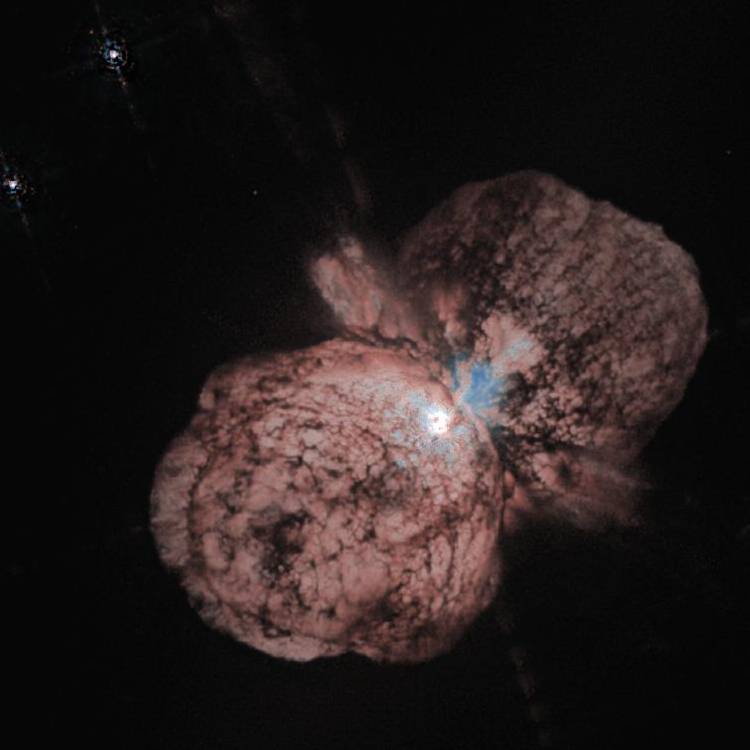Eta Carinae & the Homunculus Nebula
Place mouse over image to see a closeup;
click image to go to the article on the Hubble web site.
click image to go to the article on the Hubble web site.
Hubble image showing the supermassive star Eta Carinae and the bipolar Homunculus Nebula which surrounds it. The Homunculus was partly created in a "supernova imposter" event of Eta Carinae, the light from which reached Earth in 1843, when it became one of the brightest stars in the southern sky. Eta Carinae itself appears as the white patch near the center of the image, where the 2 lobes of the Homunculus touch. Although the star released as much visible light as a supernova explosion, it survived, producing two lobes and a large, thin equatorial disk, all moving outward at more than half a million miles per hour. It is about 7,500 to 8,000 light-years away, and the main star is between 85 and 195 times the radius of the Sun, and 100 to 150 times as massive. It is a Wolf-Rayett type of star, less than 3 million years old, and will not survive much longer. Image Credit.


